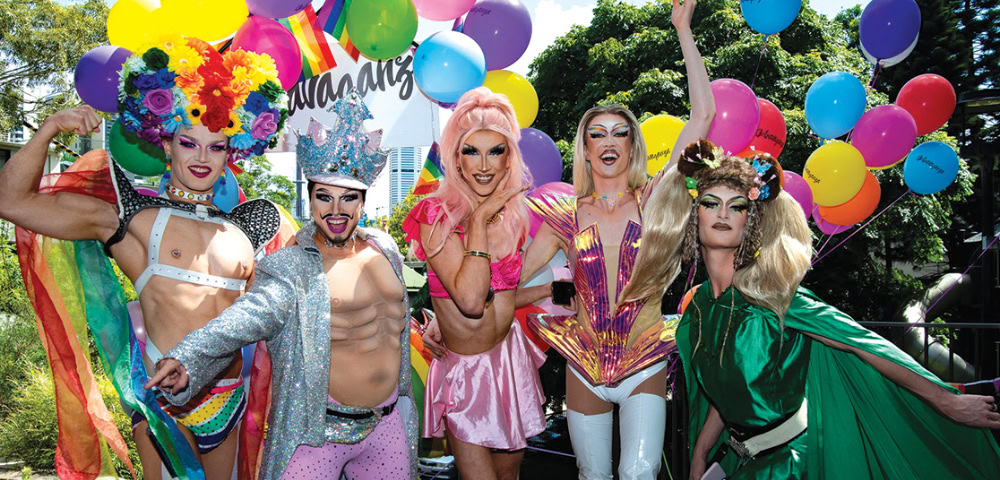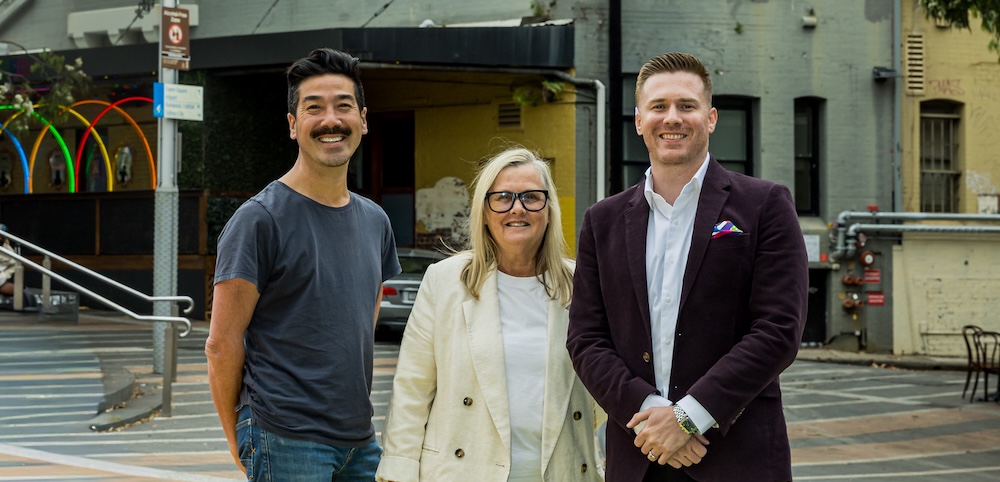
Called to account (3/4/2003)
Police investigating the disappearance and death of two gay men in the late 1980s misplaced important evidence and documents, the coroner’s court heard this week.
In a damning day for the police, the inquest heard officers involved in the cases had misplaced reams and reams of evidence relating to the July 1989 disappearance of Wollongong newsreader Ross Warren. Other police had lost hair samples found clutched in the hand of John Russell, whose body was recovered from the bottom of a Tamarama cliff in November 1989.
Senior deputy state coroner Jacqueline Milledge began an inquest into the cases this week. The court heard evidence on Monday police had identified seven persons of interest in relation to gay bashings by teenage gangs in the late 1980s.
Thirteen years after Ross Warren disappeared from Tamarama, the only police records of the subsequent investigation are a four-page document suggesting he may have fallen from a cliff.
Ross Warren went missing on Friday 20 July 1989. His car was later found parked near a known gay beat at Tamarama’s Marks Park and his keys on a ledge at the bottom of a Tamarama cliff.
Kenneth Bowditch was the head of Paddington detectives at the time of the disappearance, and led the investigations.
Bowditch told a coronial inquiry into the death or disappearance of three gay men from Sydney’s eastern suburbs in the late 1980s he was appalled that the other documentation had gone missing.
There would have been reams and reams of paperwork relating to the Ross Warren disappearance, Bowditch said, rather than the four-page statement he made on 28 July 1989.
Where these records are, sir, I have no idea. And I’m appalled.
The retired police officer said most of the information would have gone to the police’s missing persons unit some time after the disappearance.
The coronial inquiry heard there was also no evidence to support Bowditch’s claims he had activated the police divers to search the cliffs near where the keys were found.
Police divers records indicated they had not searched the area around the time of Russell’s disappearance.
Bowditch told the court the investigators would have to speak to them about why they don’t keep their records.
The court heard Mr Warren’s keys were not fingerprinted to determine if someone else had touched them. This was due to the fact they were found on a ledge and believed to be wet, and wet metal did not provide fingerprints, Bowditch said.
Bowditch said the investigation was very active from the time of Mr Warren’s disappearance until 19 August 1989, when a murder case took precedence.
But two of the three police officers listed as working closely on the case have since tendered statements they had little or no involvement, including the officer Bowditch suggested was second in charge, the court heard.
Bowditch was also queried on why he made a conclusion Warren had most probably fallen off the Tamarama cliffs, despite the amount of press at the time suggesting he had met with foul play.
I don’t know what happened to Ross Warren. As far as I know, unless there is other evidence that I’m not aware of -¦ he is still a missing person, he told the court.
There was always a possibility he had been murdered. But it was not my belief at the time.
Bowditch became angry when Patrick Sadi, the lawyer representing the NSW Police Department, suggested he could have made more effort in the case.
How dare you suggest I didn’t put effort into this, sir. If the police did not lose the information I wouldn’t be sitting here answering these questions, he told the court.
Sally Dunbar had been a police detective for just four years when she was put in charge of investigations into the death of 31-year-old John Russell.
The court heard Dunbar had no recollection of what happened to a clump of hair found gripped in Russell’s hand at the time, except she had believed it was taken by scientific officers.
The hair went missing before a 1990 coronial inquest into the death.
In hindsight [I may have done it differently]. I didn’t know the hairs were lost. I didn’t know the hairs were lost until about 18 months ago.
Dunbar told the court she did not try to find the hair sample after the initial discovery, but could not recall why.
The coroner asked Dunbar why Russell’s family, who attended the inquiry yesterday, were not informed of any developments in the case in the months following his death.
Forensic pathologist Alan Cala was called to the inquiry yesterday to give evidence based on a series of photographs taken of John Russell’s body at the time of the incident.
Cala said the position of Russell’s body when it was found was unusual. Normally bodies found at the bottom of cliffs lay with the feet towards the cliff face, but Russell’s body was in the opposite position, which could have suggested he was thrown from the edge.
The fact Russell appeared to be clutching at least four, and probably more than that hairs in his hand was also significant, Cala told the court.
But it was unclear from Russell’s injuries whether he had been assaulted before falling from the cliffs, he said. All of the injuries on his body could have been caused by the fall.
Russell had a blood alcohol reading of 0.255 at the time of his death.
Russell’s best friend Mr Smith also gave evidence yesterday. He told the court the two of them had had about 12 beers each before going their separate ways -“ Smith home, Russell to Mark’s Park.
Smith, who had been friends with Russell for 13 years, told the court he believed Russell was in a good frame of mind, and would not have been contemplating suicide. He was due to inherit a significant amount of money and was planning to move to the coast.
Smith told the court he gave one statement to Bondi Police soon after Russell’s death, but did not hear from them again.
Senior Sergeant Adrian Macdonald Ingleby was working at Bondi Police at the time of Russell’s death and was involved in the subsequent investigations. At the time, Ingleby had worked in and around the eastern suburbs for 19 years.
When a group of teenagers bashed a second man and tried to throw him off the cliff a month after Russell’s death, Ingleby believed Russell might have been killed in similar circumstances, he told the court.
Ingleby said the Marks Park beat was known to police, but not as a site of frequent trouble. Investigations following Russell’s death were possibly the first time he had been required to go there for police work.
[But] I’ll tell you from my 33 years’ experience, any gay man who goes to a gay beat is at high risk of being assaulted or robbed. They know that themselves -“ it’s no secret.
Ingleby told the court there was no culture of homophobia at Bondi Police. There was a gay liaison officer at the station from 1990, who worked extremely hard to foster relations between the gay community and the police force.
The inquiry is expected to last until the end of next week.









